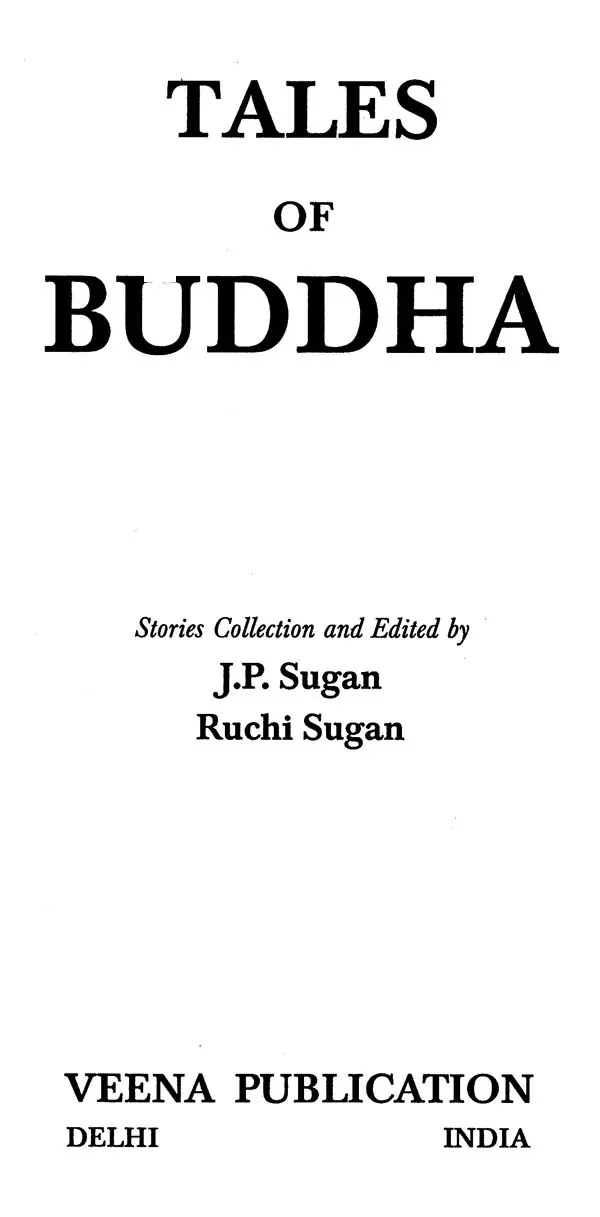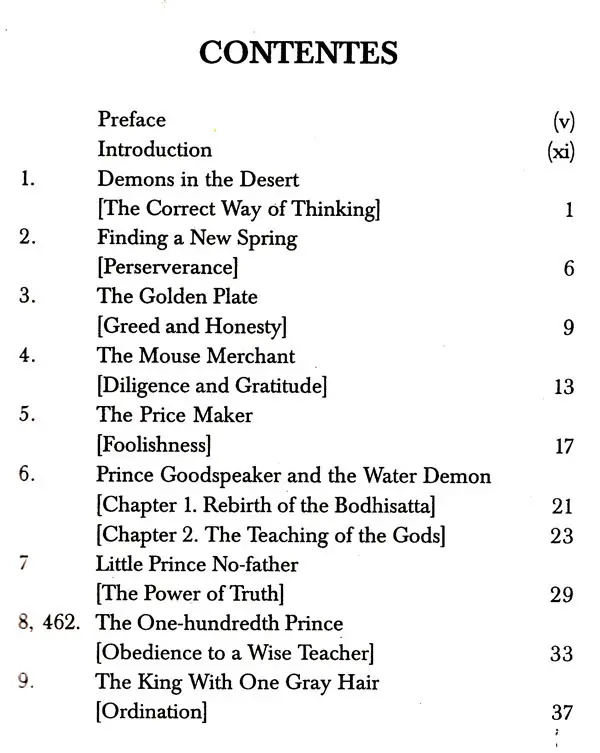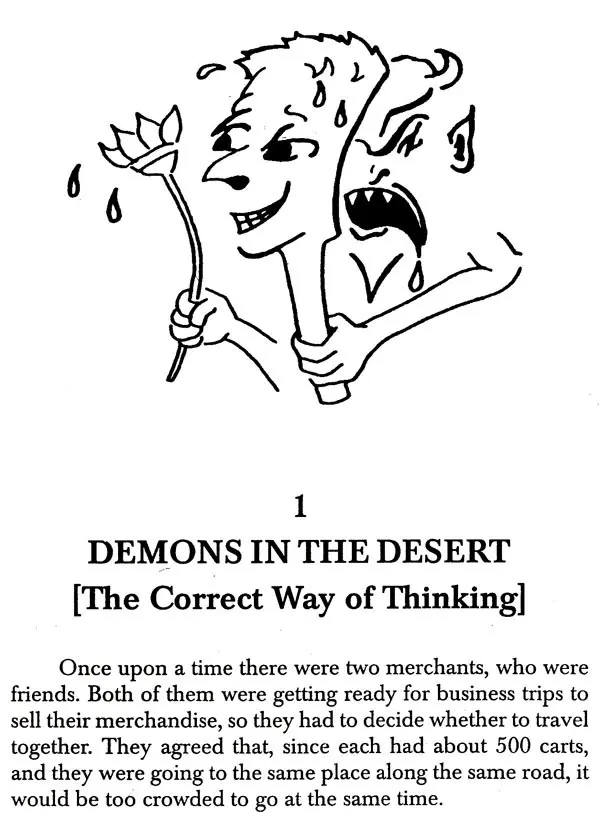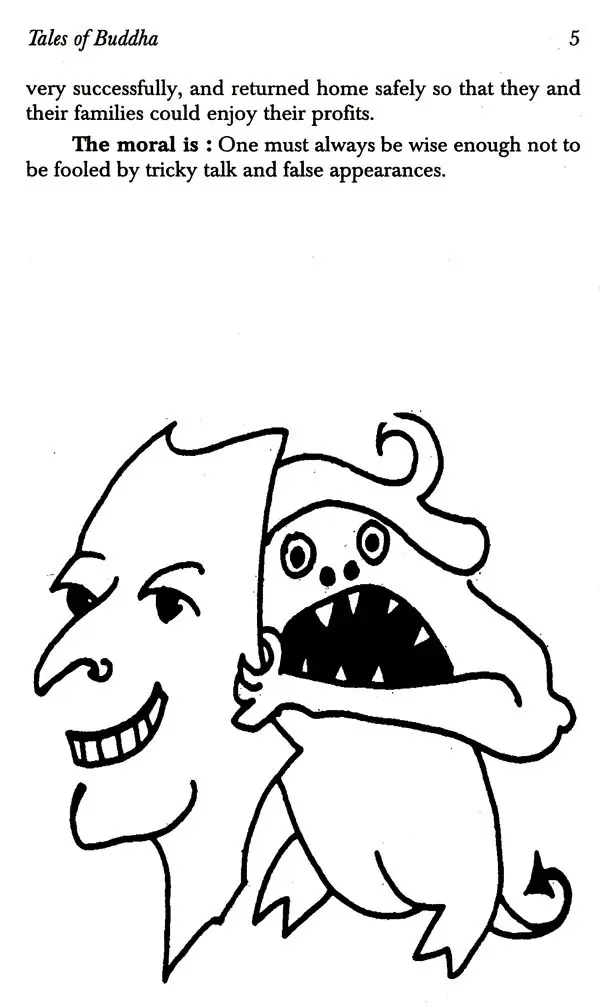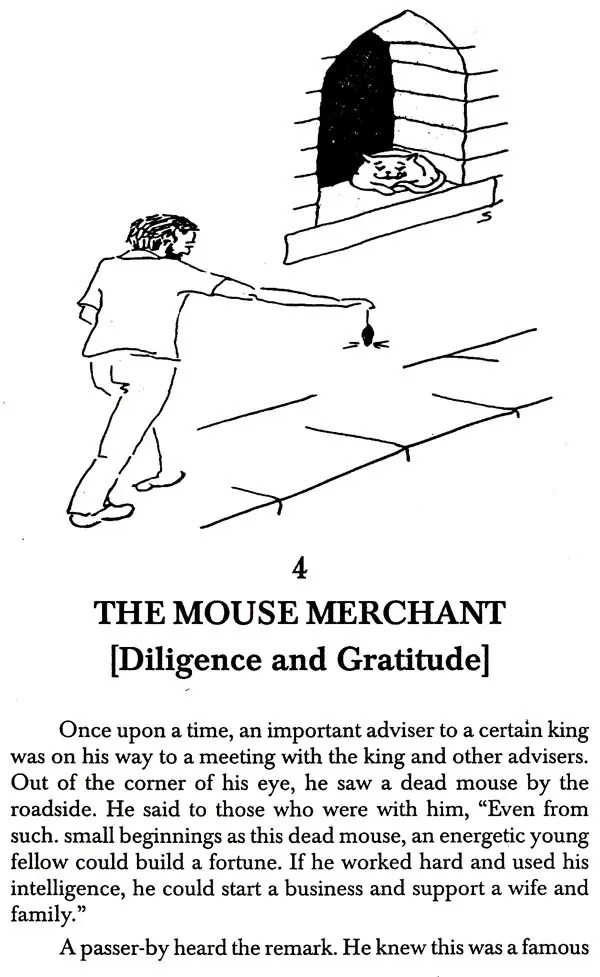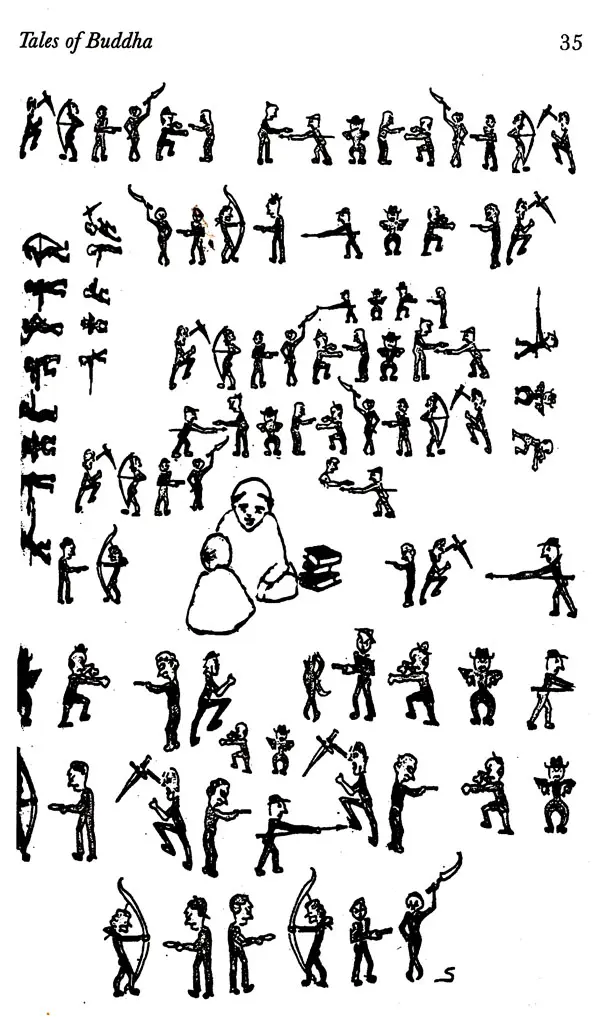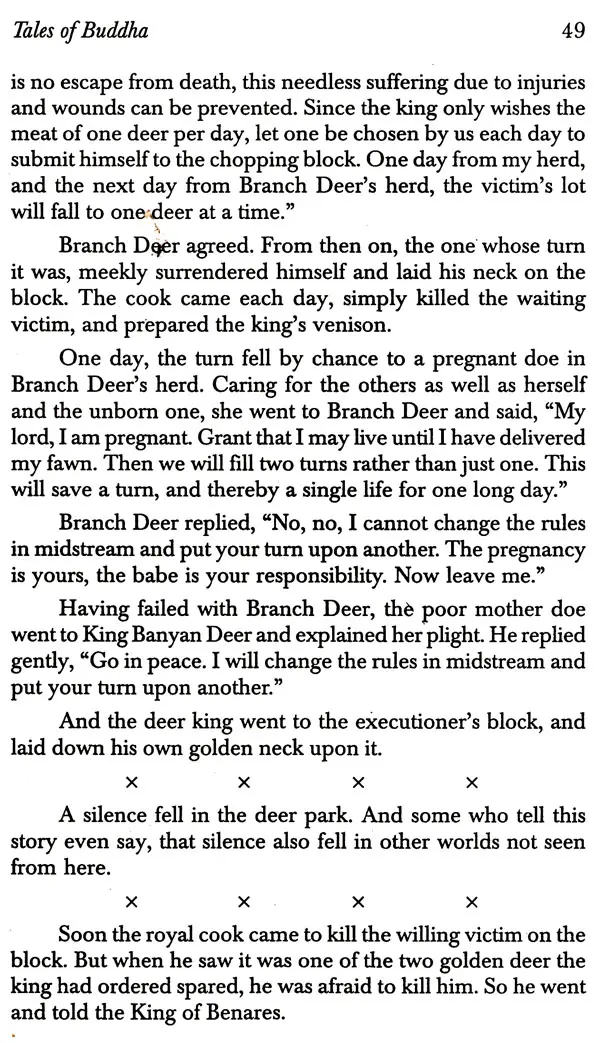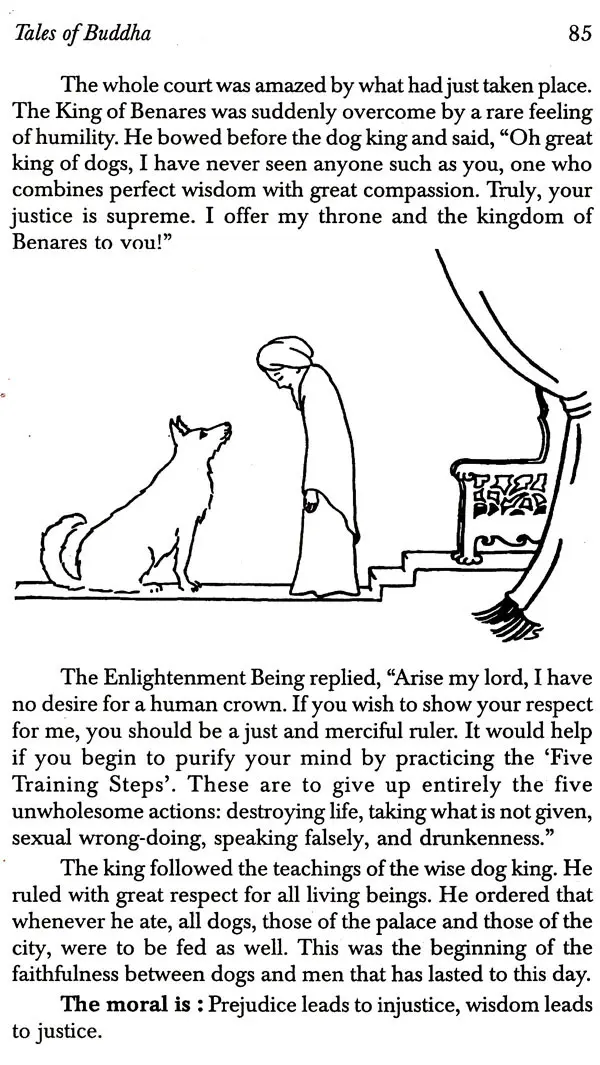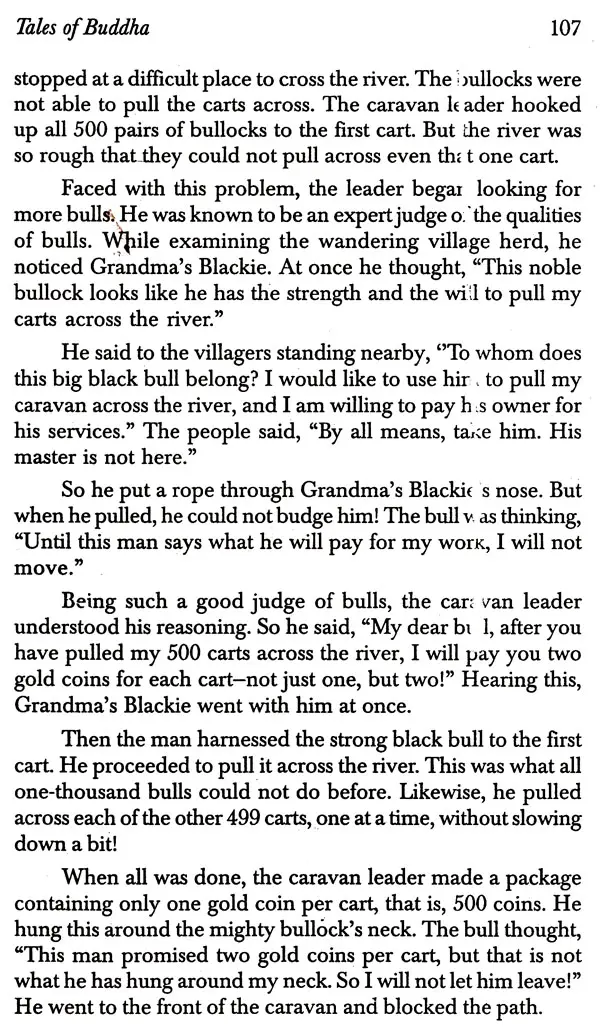
Tales of Buddha
Book Specification
| Item Code: | UAO019 |
| Author: | K. P. mahathera, J. P. Sugan & Ruchi Sugan |
| Publisher: | Veena Publications, Delhi |
| Language: | English |
| Edition: | 2004 |
| ISBN: | 1818922400X |
| Pages: | 222 |
| Cover: | HARDCOVER |
| Other Details | 8.80 X 5.80 inch |
| Weight | 430 gm |
Book Description
-The truth is always stronger than lie.
- A fool in high office can bring shame even to a king.
-Unwholesome action bring shame and fear whole some actions brings self respect and peace.
-Infatuation leads to destruction.
-The wise remain innocent.
-Fools are trapped by their own desires.
-Even religion can be a source of ignorance.
-Truth, wholesomeness and com passion can save the world.
-Honesty is the best policy.
- Don't give up too easily-keep on trying until you reach the goal.
Ruchi Sugan Graduated B.Sc. from Ch. Charan Singh Meerut University. Done Public Relation Management from YWCA of Delhi. have made efforts Editing 50 stories of Jataka.
The Buddhism institution of Thailand and other places of world have made efforts to find out the real truth to which the Gautam Buddha became Buddha from the stages of Bodhisatva then Buddha. Buddha taught to remove wrong views right knowledge is necessary. Right Aspiration is a product of right views. Since evils are to be expelled other desires are to be encouraged like love of service to others. Desires to do and seek justice and like. Through each of Jatak, Gautam Buddha invented a new truth of human life as well as for world to establish peace.
The present tales have been acknowledged from the efforts of International Buddhist Institution of America. My thanks to Miss Ruchi Sugan of VEENA PUBLICATIONS for having completed the work so nicely and in such short time.
In all Buddhist countries the Jataka tales were the major sources for developing the character of the people. They were used widely in preaching by monks and lay preachers. King Dutugemunu (2nd century B.C.), in Anuradhapura, paid for the support of preachers to teach Dhamma, the teachings of the Buddha. They usually used these stories in their sermons. Even the Venerable Arahant Maha Mahinda, who introduced Dhamma into Sri Lanka, used these stories to illustrate the truth of the teachings. Some were even used by the Lord Buddha in his teachings, and from him his followers learned them and passed them into popular use in society. Even earlier, the same types of stories were present in Vedic literature.
Greek myths, as well as the fables of Aesop, inherited them from the Vedas and Buddhism; Persia also took them from India. They later migrated into the stories of Chaucer in England and Boccaccio in Italy. The stories were used for a variety of purposes. In Sanskrit, the Pancatantra used them to teach Law and Economics, and the Katha Sarit Sagara used them for the development of knowledge, as well as just for enjoyment. In the past, people have been satisfied and fulfilled in many ways by hearing them in forms ranging from lessons to fairy tales.
By reading these stories, children and adults can develop their knowledge and learn how to face the difficult experiences of modern life. They can easily develop human values and good qualities like patience, forbearance, tolerance and the four sublime states of mind -loving-kindness, compassion, sympathetic joy and equanimity. The major purpose of these stories is to develop the moral and ethical values of the readers. Without them, people cannot be peaceful and happy in their hearts and minds. And the reader will find that these values are very different from those of the wider, violently acquisitive, ego-based society.
In this interpretation, changes are being made to the style of the old Jataka stories, and explanations are added, as is appropriate for children in the modern world. The lovely art work is also sometimes in a modem setting, to attract young and old to the truths contained in the tales.
**Contents and Sample Pages**
